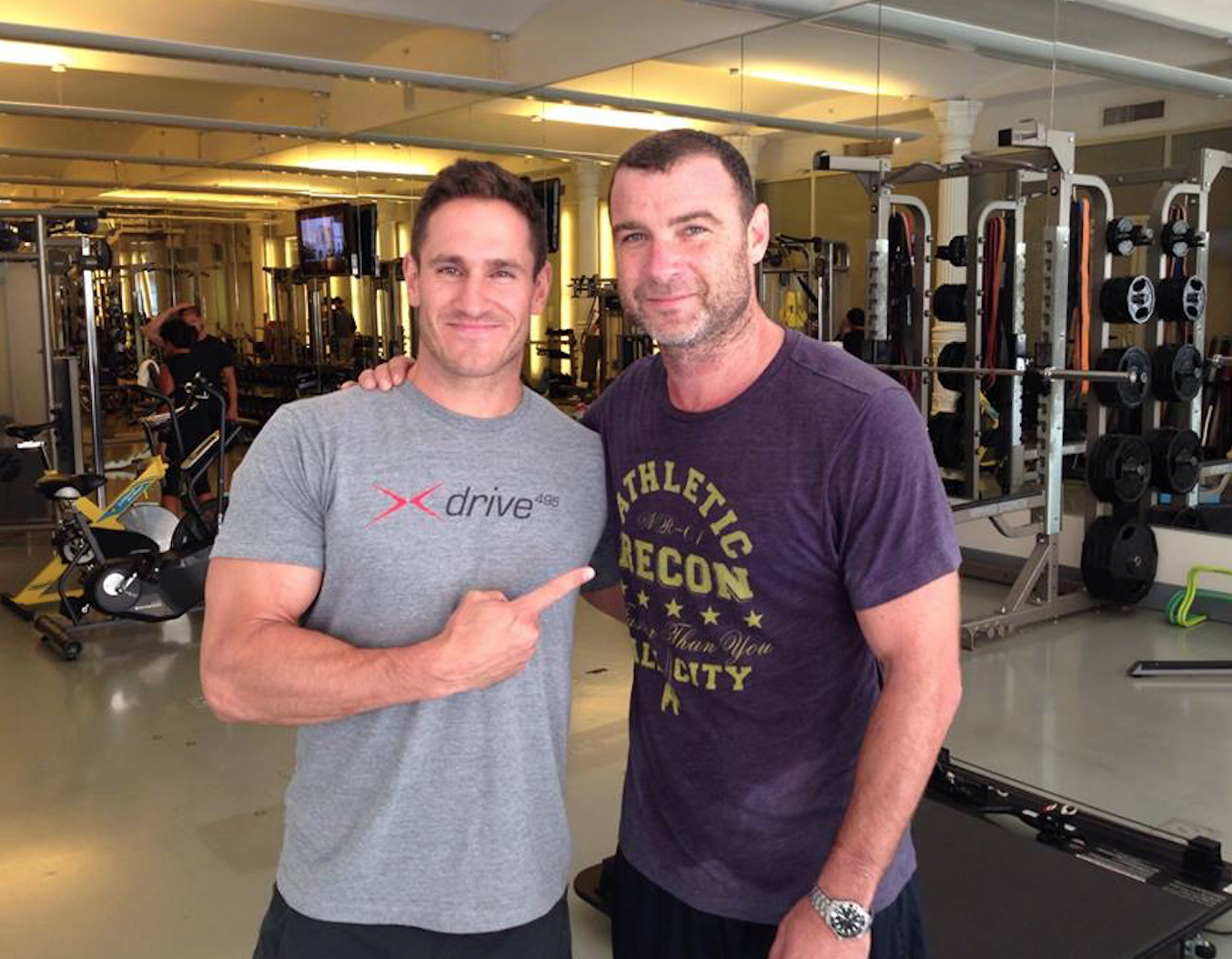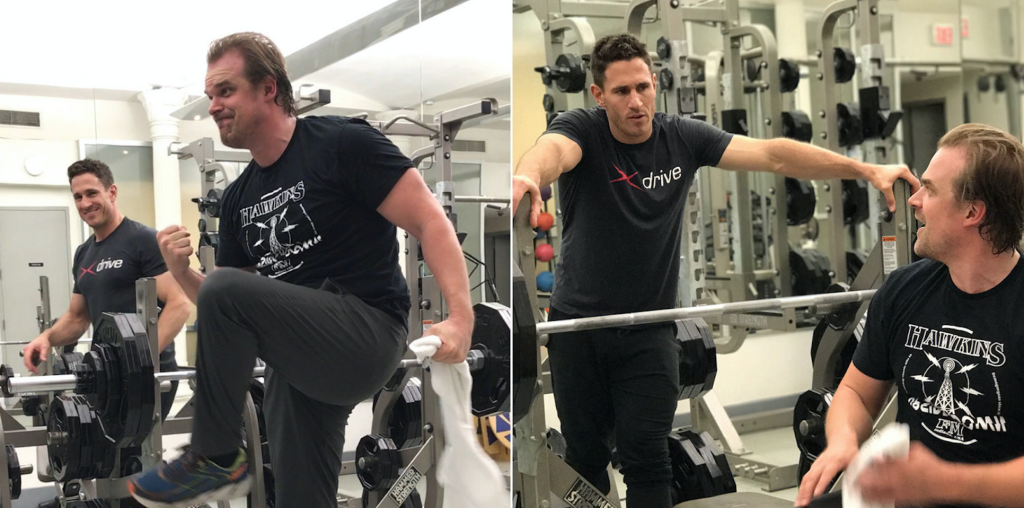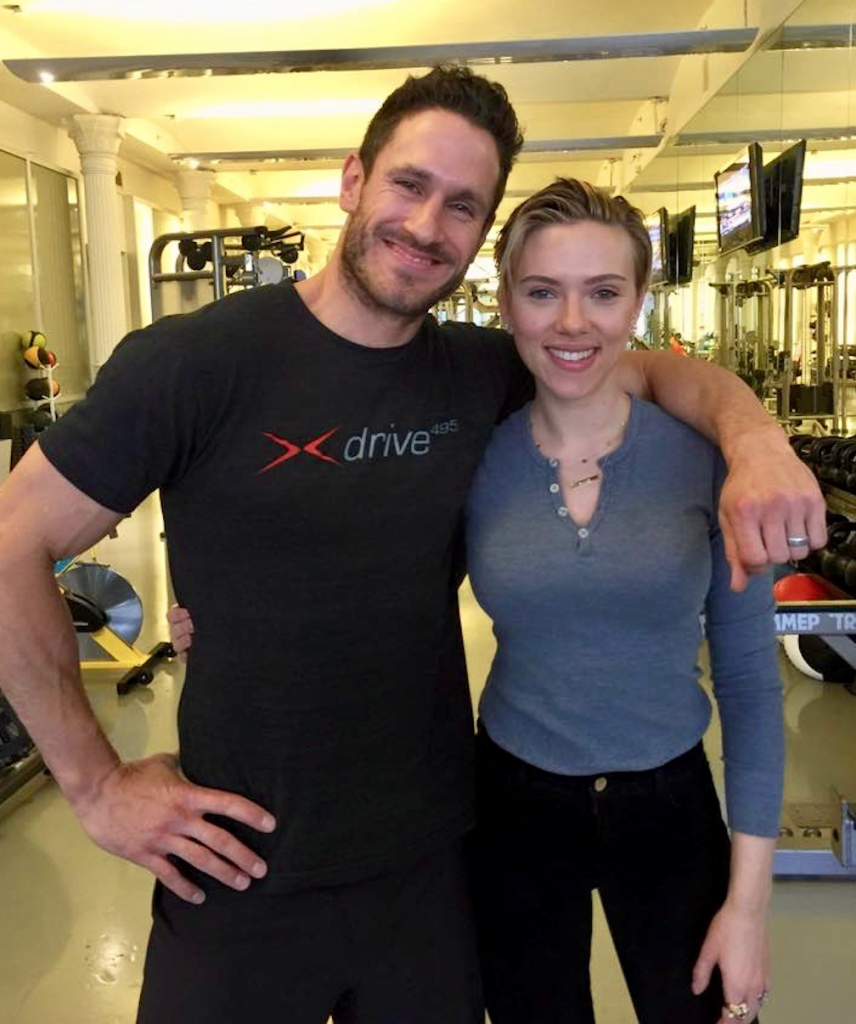
Interview with Celebrity Trainer Don Saladino
You’ve seen his clients in big-budget movies like Deadpool (Ryan Reynolds) and shows like Ray Donovan (Liev Schreiber) and recently helped Blake Lively lose 61 pounds in 14 months after giving birth to her second baby. Don Saladino walks the walk himself, and this month appears on the cover of Muscle & Fitness magazine. We sat down with New York City’s trainer to the stars and asked him to give you guys and gals some free advice. He went one better. As an exclusive offer to Robert Irvine Magazine readers, you can click HERE to get a free month of workouts on his new workout app, Playbook.
Robert Irvine Magazine: Blake Lively has made a lot of press for her weight loss. Why do you think that got so much attention?
Don Saladino: I think it was very refreshing for people to see that it took her 14 months. We weren’t doing any gimmicky three- to six-week plan. It does take a mom extra time. This is what she struggled with. It was very genuine.
RI: What’s in the Playbook app?
DS: Every month you get a four-week plan, so you get four workouts. I’ve split my workouts into either ‘suit-up’ workouts for the guys, and ‘tone-up’ workouts for the girls. But then on top of that, you get six bonus workouts. Those workouts can be mobility, arms, cardio, abs. Those workouts are at the request of the subscriber. The subscriber only pays $9.99 a month. But for that, they’re getting the same programs that I use with myself, but that I also use with Ryan Reynolds, or Blake Lively, or Sebastian Stan.
RI: You’re training Dave Harbour (of Stranger Things fame) for his role in the Hellboy reboot.
DS: Yes, and when he came on day one the guy had such bad back problems, he couldn’t deadlift the 24-kilogram kettlebell. Then when he left to shoot Hellboy nine weeks later, we had him pulling 400 pounds off the floor. I trained him with a philosophy I like to refer to as performance physique. It combines the strength and conditioning world with the physique world, which is bodybuilding. red carpet ready, if you know what I’m talking about.
RI: He was husky in Season 2 of Stranger Things. Did he need to drop weight?
DS: About three weeks in I got a call from the production company, and they wanted to stop his training because they said he was losing too much weight. I said, ‘Guys, he started at 250. He’s 249 now.’ They said, ‘Well, his shape is changing too much.’ They explained that he actually needed stay big. So what we did was we kept him training hard but let him eat a bit more dirty with his diet. He had to be able to move and he had to be strong, so we got him a lot stronger. He was like an Olympic shot putter. The guy stands at about 6’4”, 250 pounds, so he’s already a big dude. Not everyone that trains with me needs to be in Ryan Reynolds ab shape.
RI: The motivation for an actor in a big-budget movie is built-in. There’s millions of dollars riding on them doing this. It’s part of their job and they have to do it. What do you do for someone who doesn’t have a hard deadline?
DS: You’ve got to find that emotional connection. The majority of the people out there don’t really have a goal in mind. They want to look better naked or just want to feel good.
One guy recently told me he wanted to lose weight, so we sat down and looked at his diet. We found out he has a few drinks every night. Found out that he was doing desserts maybe four or five nights a week. I just kind of cut that volume in half. After two weeks of doing that and seeing where it got him, he was ready to do more on his own. I didn’t have to push him; I showed him.
I think a big mistake is that you go to an expert for a program or a diet, they’re writing their best—or perfect—diet. For me, and for the majority of the people out there, that’s not realistic. Most people out there don’t have that type of motivation. I found that if we can just go and fix a couple of small things, and build some confidence in that person, then within a few weeks, they’re gonna be coming to you asking for more. The biggest mistake it taking someone who’s sedentary and completely cleaning up their diet and putting them on P90X six days a week, eliminating everything they love. Nine out of ten times, people drop out. But the company that makes the program will take that one out of ten and they’ll collect that data. They get those before-and-afters for the commercial and sell that. We never see all the failures.

Training David Harbour, of Stranger Things fame. Harbour will star as Hellboy in an upcoming franchise reboot.
RI: Your philosophy seems almost bulletproof the way you explain it, but how long did it take for you to come to the conclusions that you’ve come to? What kind of mistakes did you make along the way while you were formulating this?
DS: I’ve been doing this professionally in the city since 1999, and before that in college when I wasn’t playing baseball, I was obsessed with diet and nutrition.
So I’ve been a student of this for 25 years and there’s been a lot of trial and error. And I don’t use the work ‘expert’ when I talk about myself. I’m a professional, but I’m still a student. I really enjoy learning and I somewhat still enjoy learning from mistakes. There’s nothing more invigorating for me to turn around and be like, “Oh, wow. I can change this.” I’ll sit with a new nutrition coach every year. Or I’ll sit with a new power lifting coach, or a bodybuilding coach, or someone that I feel like has something to offer every year. I might go hire that person, on top of continuing ed courses that I take.
The day I stop learning is the day I die.
RI: The distinction between expert and professional is a really important one.
DS: Look, it’s sad because everyone on the internet is an expert and people believe it because the guy has a good picture. You get these internet sensations popping up on Instagram who have a great set of abs, then they turn around and they want to give advice. But they’ve never actually trained someone. They know what works for themselves or for their genetic type. And for me, it’s scary because that spreads a lot of misleading information.
RI: What is one exercise you think everyone should do?
DS: I love the farmer walk—one-arm and two-arm carries. It is probably the most underutilized tool, but it makes everything in the body work hard. You’ll walk into to my gym and see a 120-pound Victoria’s Secret model walking around doing them. I think they’re so much bang for their buck. I think you can burn fat with these, you can build strength, you can build muscle, it’s safe. People who can’t hinge or do a simple toe touch can do these. The other big bang movements that I like are sled pushes, squatting, benching. I love dead lifting.
RI: You’re in great shape, but you’ve also got a very successful business with A-list clients and you’re now covering a major magazine. As far as general success is concerned, what are the most valuable lessons you could share?
DS: There are three lines that I always live by from my grandfather. They are, “Run scared, try harder, and there’s no room for complacency.” On top of that, if you mix that formula with humility, you can be successful. I would want people to understand that, just because you see someone on the cover of a magazine, don’t think it’s always been glamorous. I’ve got kicked in the face ten times more than I’ve actually had successes. Humility is huge. With me, right when things start going really good, I almost get a little insecure. Like, “Okay. Let’s keep a good head on our shoulders here. This can all go wrong really quick. We know this. Be grateful to be in this situation.”
That’s my advice. That’s been my formula for success. I still don’t feel like I’ve become successful yet. I still feel like I have a lot of work to do. But the fact that I can do what I do for a living and absolutely love what I do, I think that’s the biggest blessing.
RI: Do you use visualization?
DS: I do. I do ten minutes of meditation minimum every day. I’ve been doing it with my daughter a lot too, because she’s been urging me to do it. We’ll sit for around ten minutes. I spend roughly two to three minutes visualizing things that I want to change, visualizing things that I want to see go my way. “Where would my perfect life be?” Then, just focus on those things. Then also focusing on a few things that I’m grateful for.
So, I break down my visualization to those three things. What I’m grateful for, things I want to improve, and exactly the way I want things to be. It’s a really simple formula.
RI: How do you deal with stress?
DS: I work out, which is why I’m in pretty decent shape. (Laughs) I love playing ice hockey, I play golf in the summer. So, I have some escapes. I love to laugh. I’ve got a great support system around me. I would say every week something goes wrong at some point. I’ve got a good group of people that I can confide in and talk to. Working out is my medicine. It’s one of those things where if I can just catch a sweat, even if it’s an extra session of cardio, whatever it is, I feel like that really helps me out.
No matter what, I’m trying to get seven to nine hours of sleep at night. I’m up early so that means I’m in bed early, no later than 9:00. I’m up between 4:30 and 5:00 most mornings.
RI: Do you have a favorite client success story?
DS: Right now, my favorite success story is a woman I’m working with for free. She reached out to me on social media three years ago. She started following me. I saw her liking my posts and she was very friendly. One day she turned around and she goes, “Can I tell you my story? I’m in a little bit of trouble.”
She was 872 pounds.
RI: Wow.
DS: She couldn’t walk. She had a heart condition called cardiomyopathy. I started giving her some easy tips. I was very, very attentive about it because we wanted to get her doctors involved. Fast forward three years, she’s at her lowest weight right now. I think she’s at 443 pounds . She lost half of her body weight. She couldn’t walk more than 2,500 steps after she started losing the weight. Right now, she’s consistently, every day, walking 17,000 steps a day, which, for anyone, is fantastic.
I just gave her a full body work out this week. It’s got step-ups, bicep curls, kickbacks, standing up and getting off the floor. Things that we just take for granted, she used to not be able to do. We actually have her doing glute bridges right now, which is exciting. We communicate every day, and every week she sends me an update.
Originally I sent her a diet and she said she couldn’t do it because she couldn’t afford it. She was on food stamps. So, we had to do a diet around her budget, but we were able to do it. I think it’s a great story. We’ve got a lot of work to do, but I know it’s gonna turn out as one of my favorite success stories so far.
RI: Parting thoughts?
DS: I think a lot of people out there aren’t interested in fitness because they just think fitness is too hard. My thing is, fitness does not have to be going to the gym and hitting the iron for hours. Fitness can be as simple as making better choices and doing things in moderation. And you know what? Taking the stairs instead of the elevator. I think once we start breaking people into this simpler idea of fitness, and they start building some confidence, they realize it’s not that hard.
Click the links to follow Saladino on TWITTER and INSTAGRAM, and visit his website, DONSALADINO.COM


